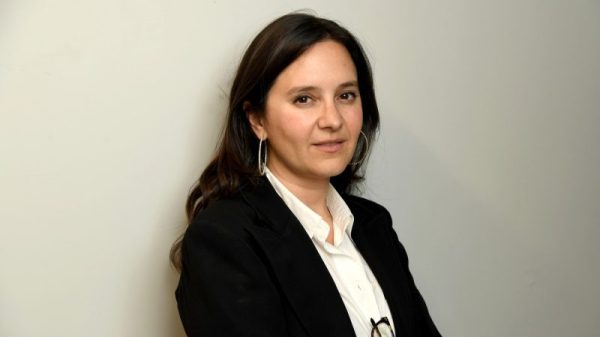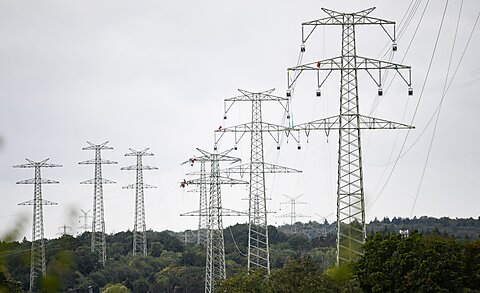The Federal Energy Regulatory Commission (FERC) is not a household name, but its impact on the daily lives of Americans is profound. FERC is an independent and bipartisan federal agency, and a well-functioning FERC is essential to a well-functioning energy industry in the United States. The agency is responsible for (among other things):
- reliability of the bulk power system (the “grid”),
- wholesale electricity markets across the country,
- hydroelectric facility licensing (mostly relicensing),
- certification of interstate natural gas pipelines, and
- siting and construction of liquefied natural gas (LNG) facilities.
FERC’s origin and responsibilities regarding hydropower go back to the 1920 Federal Water Power Act. Most of its present responsibilities come from two major congressional actions in the 1930s—the 1935 Federal Power Act and the 1938 Natural Gas Act (NGA). For more background, see the official “FERC 101” slide deck. Also, I should disclose that I spent about half of my career at FERC and have great respect for my friends and colleagues who work there.
An examination of the natural monopoly premises underlying FERC’s organic statutes is important but beyond the scope of this piece. Those of us who support free markets can debate whether the federal government should have so much authority, but FERC has had a significant level of authority since the 1930s and is not going anywhere soon.
In fact, recent legislative proposals would give FERC an additional responsibility—one that’s presently being abused by the Department of Energy (DOE)—to approve the international sale of natural gas. FERC is responsible for licensing LNG facilities, many of which are for domestic use only. However, under the NGA (as amended by the DOE Organization Act), the DOE is responsible for approving the sale itself—the import or export of the natural gas commodity—if it deems the transaction in the “public interest.”
As Cato’s Scott Lincicome has written, returning the DOE’s LNG authority to FERC is probably a step in the right direction (the NGA tasked the Federal Power Commission with approving international sales of natural gas; the DOE Organization Act created the DOE, renamed the Federal Power Commission to FERC, and gave the authority to the new DOE).
However, any conversation about giving FERC more authority (or encouraging it to push the envelope of its existing authority) should also address the elephant in the FERC room—the near-perennial concern that FERC won’t have enough votes to do its job.
The Quorum Issue, Past and Present
Writing and issuing orders is how FERC operates. By law, FERC needs a quorum of three voting commissioners out of a maximum of five to issue orders, which are typically drafted by FERC’s staff of about 1,500 people. These orders are negotiated and ultimately approved and voted out by the commissioners, who are nominated by the president and confirmed by the Senate. At the moment, the agency has two vacant commissioner roles and three active commissioners. Richard Glick (D) and James Danly (R), each a former chairman and commissioner, left at the end of their terms (in 2022 and 2023, respectively) and have not been replaced.
Commissioner Allison Clements (D), one of the three sitting FERC commissioners, has announced that she will not seek a second term. Her current term expires on June 30, 2024, but she can stay at FERC until she is replaced or until the end of the congressional session. As Politico reported, Clements’ departure would mean a loss of quorum and a standstill for FERC and the two remaining members, Chairman Willie Phillips (D) and Commissioner Mark Christie (R).
Political transitions are particularly vulnerable moments for FERC. The last time FERC was without a quorum was in 2017, when Republican President Donald Trump designated a new chairman among the three sitting commissioners (all Democrats), and the demoted commissioner promptly departed. The new chairman at the time, Cheryl LaFleur, and Commissioner Collette Honorable were left without a quorum, and FERC attempted to issue as many orders as possible by delegating additional authorities to staff. Ultimately, the period without a quorum lasted six months.
If the White House and Senate do not fill at least one of the vacant seats this year, FERC will again lose a quorum in early 2025. It is unclear who would be at fault, and the lack of clear responsibility could be part of the problem. It takes two to tango—the White House and the Senate. However, in this dance, many FERC insiders would say the Senate takes the lead, in part because the Senate Committee on Energy and Natural Resources (ENR) holds the hearings and markups for incoming commissioners.
Further, as a practical matter, the ENR leaders of each party frequently provide the names of top-tier candidates for the president to officially nominate. Last year, Senator Joe Manchin (D-WV and ENR chairman) recommended former FERC staffer and present ENR staffer David Rosner for the vacant Democratic seat. As of the time of this writing, Senator John Barrasso (ENR ranking member) has not recommended anyone for the vacant Republican seat. (Side note: Senator Barrasso’s wife recently passed away after a long battle with a devastating form of brain cancer, and my heart goes out to the family.)
Given the Senate’s leadership role in approving new FERC commissioners, it can also be a choke point. Senator John Kennedy (R-LA) recently pledged to block all nominations by President Biden—presumably including FERC nominees—until Biden lifts his “pause” on LNG exports. Senator Kennedy said: “Until Mr. Biden drops this battle against American energy, I’m going to block every nominee he tries to place at the State and Energy departments.” Ironically, if Congress returns the LNG authority to FERC this year, only a Biden nominee would rescue FERC from another lost quorum and enable it to approve LNG exports next year.
Solutions to the Quorum Quandary
It should be a no-brainer that the White House and Congress would give FERC every tool it needs to carry out its important work. However, there is no silver bullet solution to the quorum issue. Ideally, when an existing commissioner comes to the end of their tenure, the White House and Senate would move to ensure that the coming vacancy would be filled quickly by a qualified regulator. This should happen on a regular schedule—the five FERC commissioners would each complete their staggered five-year terms (or several of them), and the president and the Senate would work together to make certain FERC always has a full complement of five commissioners.
Sometimes it takes a nudge to get things moving. Consider this piece my polite nudge to Senate and White House leaders: please fill the two current vacancies (and the coming vacancy) because we need a functioning FERC.
Given the hyperpartisan mess we find ourselves in here in the nation’s capital, there are a couple of ways to move forward. First, the tried-and-true method of pairing a Democratic nominee with a Republican seems to work well in getting both approved. Democrats have put a name forward—Republicans should do the same, the president should formally nominate them, and the Senate hearing and markup should follow in short order.
Second, how about something that’s the opposite of tried-and-true? For an independent agency, there has been a dearth of actual independents or third-party nominees. Given the third vacancy created by Commissioner Clements’ coming departure, now is an opportune time to break that trend and nominate an independent thinker who does not identify as Democratic or Republican (in addition to the typical Democratic and Republican nominees). Both parties might scoff at this suggestion, but it is worth wondering why.
Of course, my preference is to have a nonpartisan and free-market thinker at the helm of FERC, and it seems neither political party fully embraces free-market thinking anymore. If the policy debates at FERC continue to be between typical Democrats and typical Republicans along partisan lines, the odds of FERC regulations embracing an open-ended approach to the energy industry will continue to fall.
Conclusion
FERC finds itself once more with an uncertain future. Likewise, much of the US energy industry—surely the large portion directly regulated by FERC—is subject to the same uncertainty. The prospect of another lost quorum at FERC should be enough to get the Senate and White House moving on FERC nominees. The American people need a reliable power grid and abundant natural gas. Let’s hope partisan politicians don’t hamstring FERC again.



















